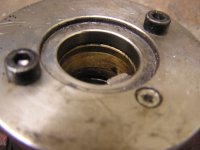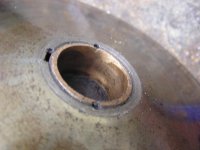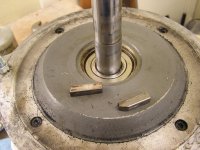lohring
Plastic
- Joined
- Apr 27, 2013
- Location
- Oregon USA
My old Supermax (Bridgeport clone) mill has been trouble free for years. It has a head nearly identical to the Bridgeport 2J2 with a variable speed belt drive. Suddenly it developed a once per revolution clank in the spindle drive. It seemed less at the lowest speed setting, but was still there.
I prepared to remove the motor by setting to the lowest speed and compressing the spring. The mill was noise free when running with the spring compressed. On a whim I removed the spring compression screws and ran the mill. It was noise free through out the speed range. Everything seemed normal for a few weeks but the noise returned. The same fix worked again. I can't see any issues with a visual inspection. The upper quill bearing runs smoothly as does the rest of the quill. Does anyone have an idea as to what is happening?
Lohring Miller
I prepared to remove the motor by setting to the lowest speed and compressing the spring. The mill was noise free when running with the spring compressed. On a whim I removed the spring compression screws and ran the mill. It was noise free through out the speed range. Everything seemed normal for a few weeks but the noise returned. The same fix worked again. I can't see any issues with a visual inspection. The upper quill bearing runs smoothly as does the rest of the quill. Does anyone have an idea as to what is happening?
Lohring Miller





